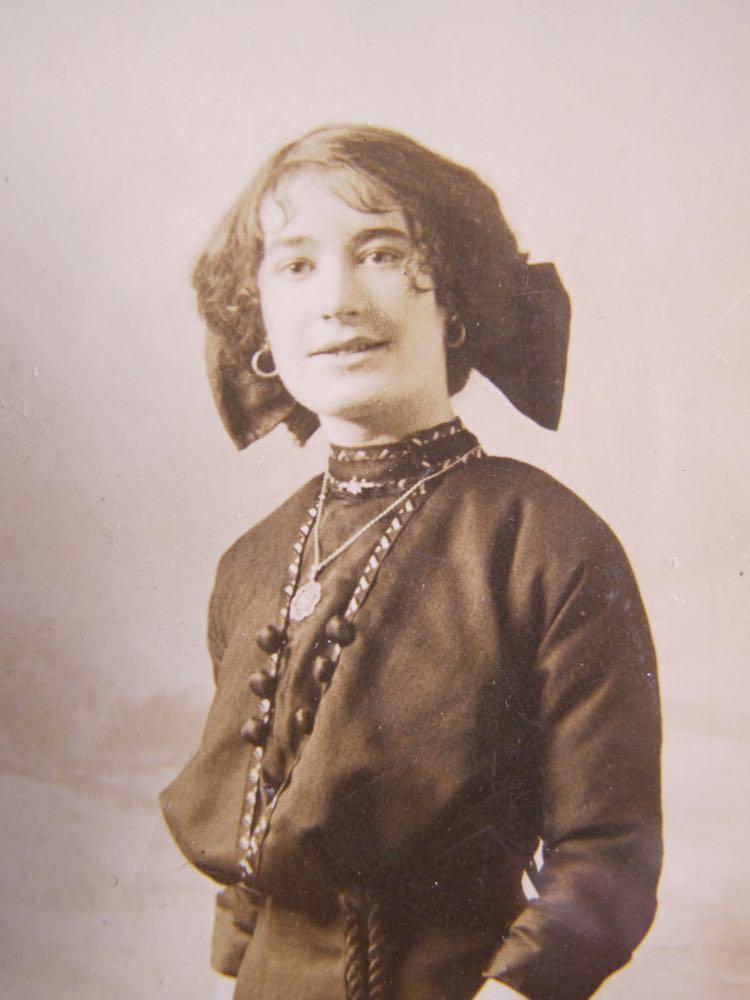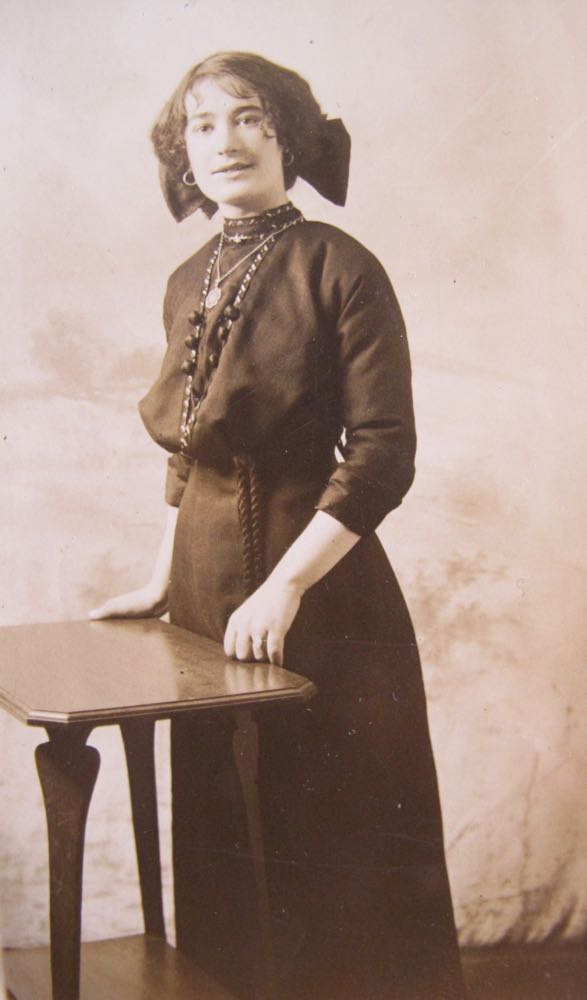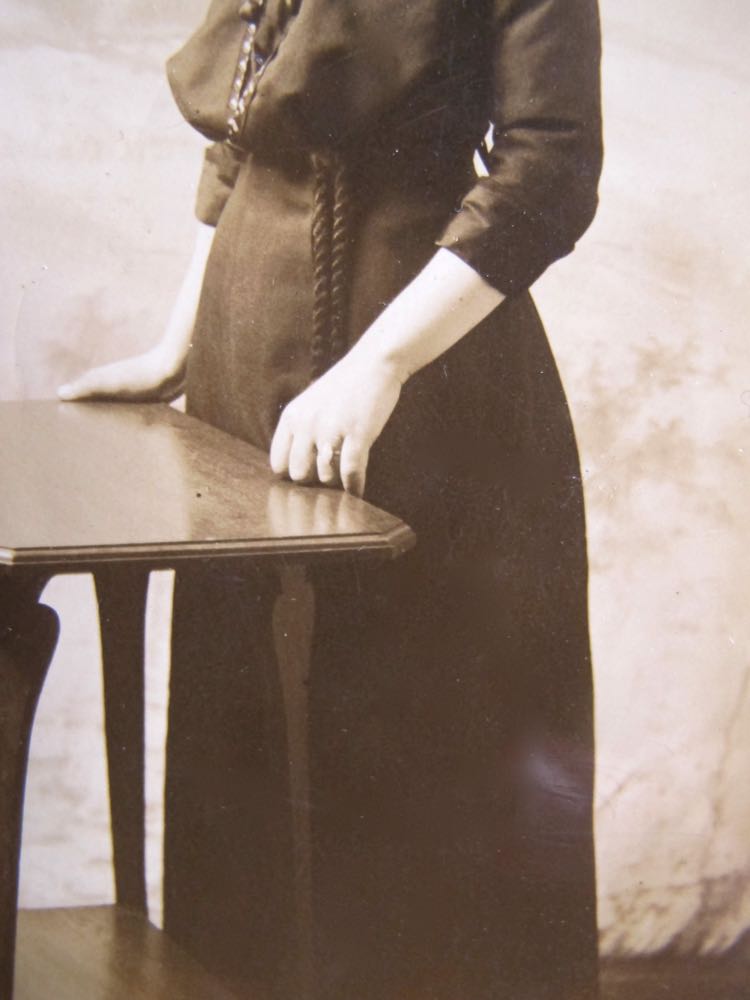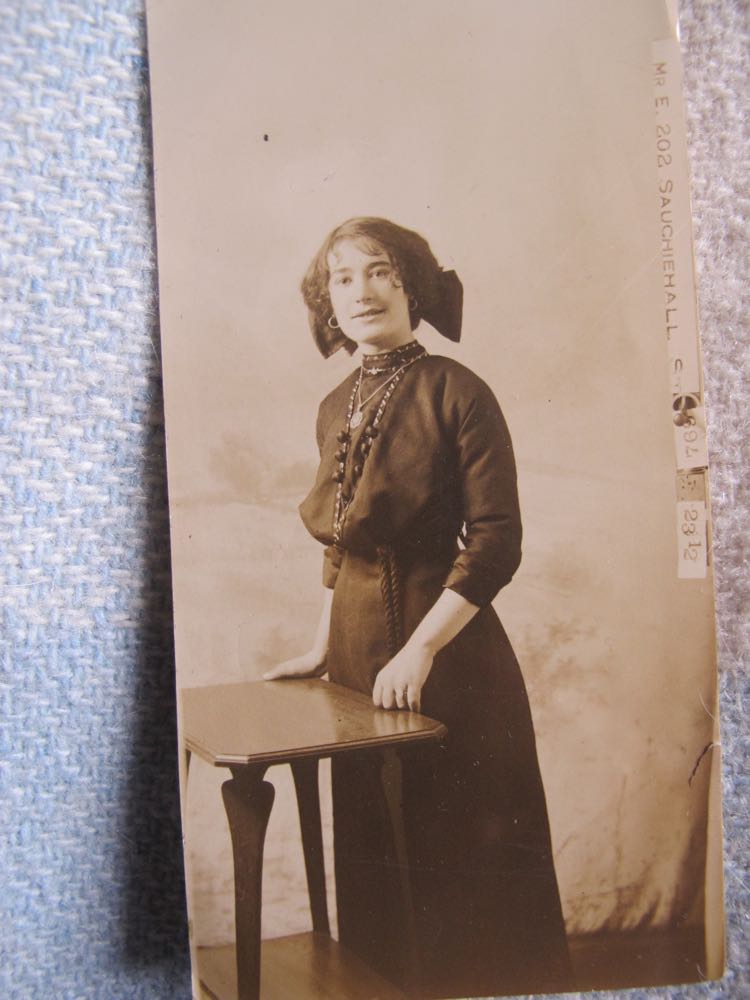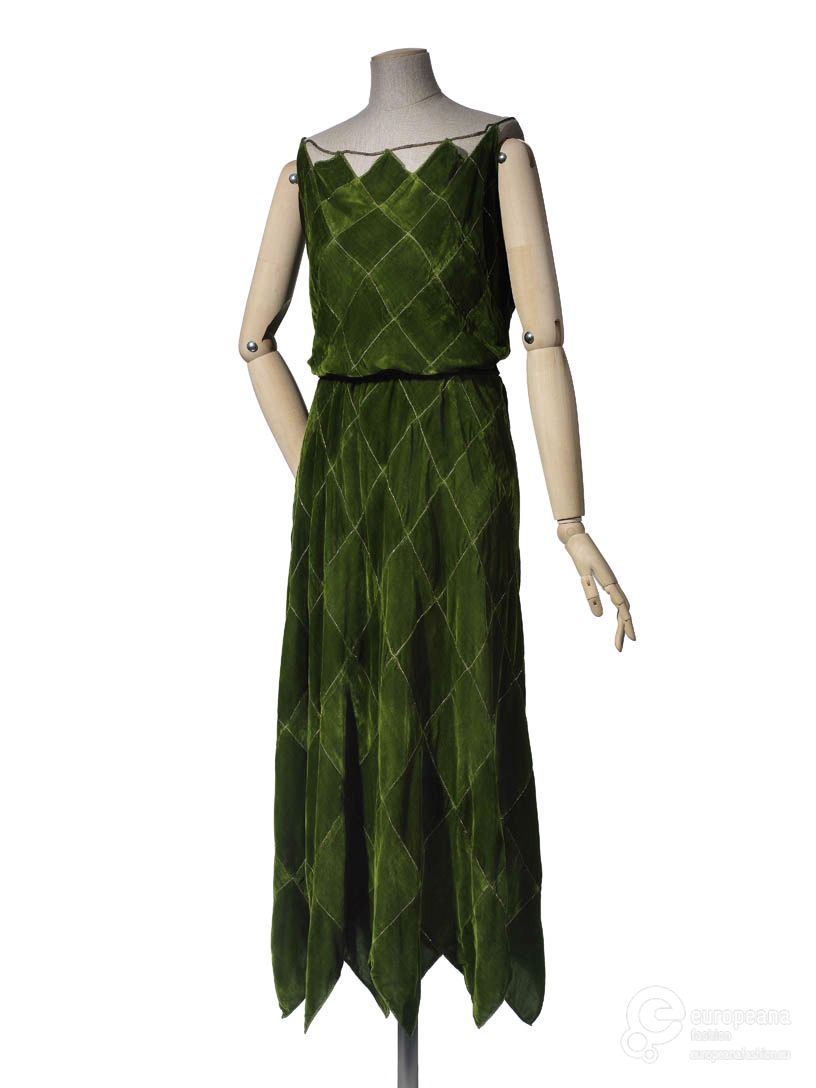Guess who forgot to do Rate the Dress last night? Yep, me. In my defence, it was a public holiday in Wellington, and my brain got stuck on Sunday mode.
So, a few hours late, but here you go!
The overall consensus on Vionnet’s green harlequin dress was that it, like everything Vionnet made, was practically perfect in every way. It got very hard to keep track of the ratings, there were so many 10s in a row! The neckline treatment, and alternating grainlines, came in for particular praise. But a few of you couldn’t get Robin Hood out of your brain, and others assumed it was as simple as it looks (!), pulling the rating down to an exceptional, but not quite perfect, 9.2 out of 10.
As a follow up to Vionnet’s diamonds and simplicity, this weeks Rate the Dress is an elaborate late 1860s confection featuring as at least as many half-oval scallops as Vionnet’s dress featured diamonds.
The dress silhouette shows the transition from the late 1860s full elliptical crinoline, to the bustle of the 1870s, which in this instance creates the illusion of an exceptionally high back waist. It’s possible that the dress originally had a sash or other waist feature which is now missing.
The dress may also have had an alternate bodice, or a guimpe which filled in the low neckline, taking it from a dinner dress (as shown) to a day or reception dress.
The lavish use of lace trim was made possible by technological advances that improved machine-made embroidery on net laces.
What do you make of this ensemble? What would have gone around the middle to make it right? Or is it perfect as it is (or un-redeemable no matter what belt was worn?)
Rate the Dress on a Scale of 1 to 10






